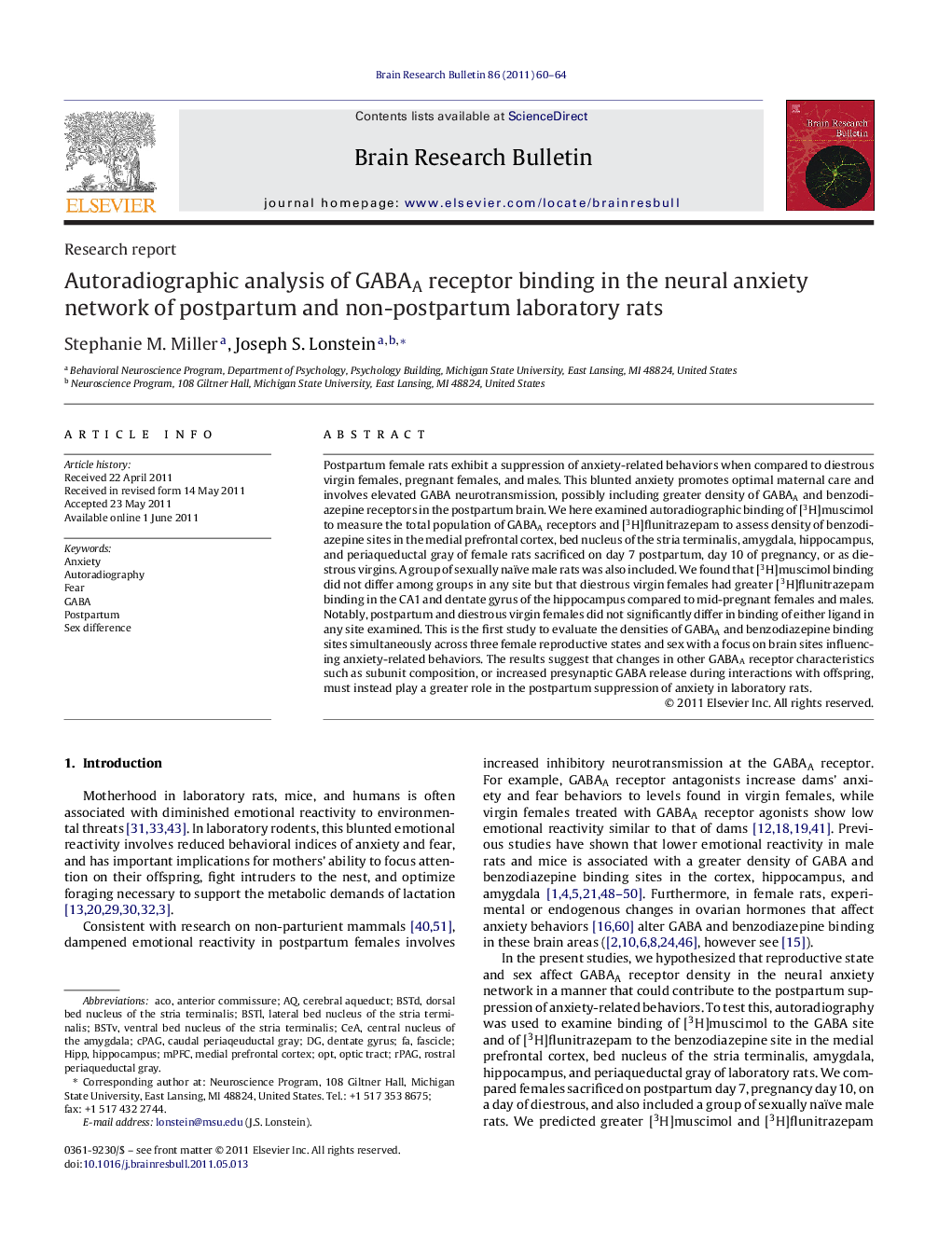| Article ID | Journal | Published Year | Pages | File Type |
|---|---|---|---|---|
| 6262174 | Brain Research Bulletin | 2011 | 5 Pages |
Postpartum female rats exhibit a suppression of anxiety-related behaviors when compared to diestrous virgin females, pregnant females, and males. This blunted anxiety promotes optimal maternal care and involves elevated GABA neurotransmission, possibly including greater density of GABAA and benzodiazepine receptors in the postpartum brain. We here examined autoradiographic binding of [3H]muscimol to measure the total population of GABAA receptors and [3H]flunitrazepam to assess density of benzodiazepine sites in the medial prefrontal cortex, bed nucleus of the stria terminalis, amygdala, hippocampus, and periaqueductal gray of female rats sacrificed on day 7 postpartum, day 10 of pregnancy, or as diestrous virgins. A group of sexually naïve male rats was also included. We found that [3H]muscimol binding did not differ among groups in any site but that diestrous virgin females had greater [3H]flunitrazepam binding in the CA1 and dentate gyrus of the hippocampus compared to mid-pregnant females and males. Notably, postpartum and diestrous virgin females did not significantly differ in binding of either ligand in any site examined. This is the first study to evaluate the densities of GABAA and benzodiazepine binding sites simultaneously across three female reproductive states and sex with a focus on brain sites influencing anxiety-related behaviors. The results suggest that changes in other GABAA receptor characteristics such as subunit composition, or increased presynaptic GABA release during interactions with offspring, must instead play a greater role in the postpartum suppression of anxiety in laboratory rats.
⺠Examined GABA and BDZ binding in brain anxiety network across female reproductive states and sex. ⺠BDZ binding in CA1 and DG greater in virgin females than pregnant females and males. ⺠Postpartum and virgin females did not differ in receptor binding.
